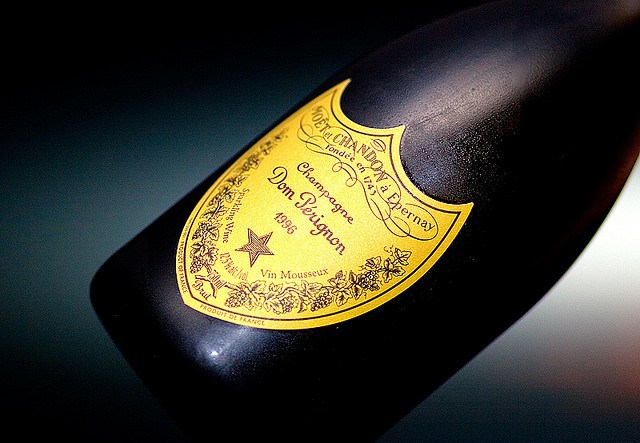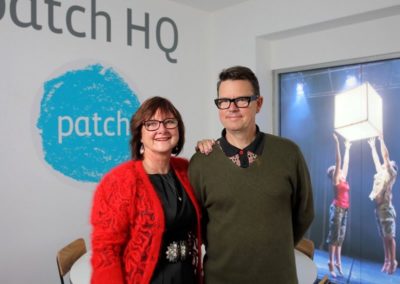How to build a strong, memorable and sustainable brand
A few years ago, I was fortunate to be invited to attend an exclusive luxury conference in Europe. What became clear was that the luxury industry was and still is struggling to utilise digital in their very human and emotion driven businesses. The conversation led by some very senior executives of global luxury brands quickly dwindled into discussion of brand success in terms of content, likes, web page visits and commentary via social media.
I was trying to be positive in light of this banal conversation and positively perked up when one smaller niche brand founder was asked about how they create content for social media and marketing purposes. He simply replied …
“If you are doing the right things, this is content and it is social.”
How refreshing, and even deviant a response.
It has stayed with me since as it was a response outside the norm. It was what one would have expected from all the leaders of these brilliant brands, which at core define what it means to be creative, innovative and sustainable. Yet, it was uncomfortable in the group at the time, and so fantastic to hear a fresh perspective.
Last week I returned from Stanford University Graduate Business School & d.school’s program on Customer Focused Innovation. Once again, I was reminded of the importance of looking outside of the norms into the extremes of behaviours to find innovation.
The theme of the week was unquestionably ‘becoming comfortable with the uncomfortable’. In my mostly uncomfortable state – which I enjoy – I had the privilege to consider what makes for a successful, memorable and sustainable brand based on my own experiences or admiring from afar.
The overarching theme is one of difference. It is an unwavering commitment to deviance, to innovation and not being as Youngme Moon from Harvard describes as ‘well-rounded’. It is a way of thinking, that in its spirit shuns ‘best practice’ and remains a David in a world of Goliath’s.
So, what does it takes to be different and build a strong, memorable and sustainable brand?
1. Have a point of view (POV)
Call it purpose, call it your big idea. Know what you are and who you are for. Know what problem you are really solving. We are flooded with articles mentioning being customer centric, human centred, customer focused. Your idea, problem, purpose should solve a customer need. Not what they say they want, but delivers on what you observe that they actually need.
It is not typically about doing what they ask or say. This results in rookie error that delivers bland, boring, nothingness. How many times do we hear the most overused words, convenience, connection, authenticity come up?
Working out what you are solving is the key here. It is not so easy and it only happens from acute observation and regular interaction with your identified target customer, in the market. It does not happen at the strategy day or from sitting in a digital, marketing or product department. It certainly does not come from over analysing ‘the data’ or google analytics.
Know what you are, know what you stand for, who you are for and what problem you are solving. Make your identity clear. Ensure that everyone in the business can communicate (verbally and non-verbally) the same simple message.
2. Gain alignment and hold onto it
Success rarely comes from the highest performance. It comes from alignment. Everyone in every function doing what is asked at a consistent and constant level. When an organisation’s corporate brand, employee brand and consumer brand are one and working together it really is a magical thing and this results in sustainable business.
Apart from delivering the best expression and experience of the brand, it delivers the best of simplicity – efficiency. There is one set of values, behaviours, a purpose and/or problem. One strategy the organisation is solving. Sounds simple, yet not so easy.
Organisational behaviour is core to a strong business and brand and this is the responsibility of all executives to lead (not just resting with HR). Where leaders are acutely aware and educated on the workings of a team, collaboration, effective decision making and effective organisational and team design there is usually a strong sustainable brand. Strong boards and business leaders I have worked with observe and understand the core tenets of psychology. Not just consumer behaviour, but organisational behaviour and development.
Ensuring diversity of thought is also equally critical. A team that all thinks the same or is unable to manage conflict or debate spells disaster. Being able to be heard, feeling safe through challenging conversation and decision making is core to achieving alignment. And, forget voting on ideas, this rarely delivers real value.
3. Always inside out
Without employees, there is no business. The employee experience is tightly connected to the customer experience and expression of any business. Employees are an important voice and influencer. Again, quite simple in theory however so often not so in practice. How often are employees the last to know of new products, new information or new processes which affects how they manage and communicate with customers?
How is the organisation sustaining their employees and is this aligned with the POV (Point of View)? This cannot be left to HR. It is every leader’s responsibility. Starting from within is about respecting employees and imparting information and trust on how best to serve and deliver mutually beneficial exchange between customers and your organisation consistently. On this note consistency trumps ‘surprise and delight’.
Over delivering and then being ‘off’ or investing so much that resources are stretched and margins cannot be maintained is simply poor business. Create the experience, ensure that it can be delivered and ensure that both your organisation and your customer generates value from the experience. Strong brands respect their employees, respect their organisation and respect their customers. If this is done well then value is generated and shareholders are rewarded.
4. Best product always
Deliver the best product or service you can afford not what you can ‘get away with’. Great brands deliver appropriately on the problem they set out to solve. Nothing more to say. Do not be cheap or try to cheat the customer. Employees know it and customers will too. Think generously within the limits of what you can afford and what suits the context of your proposition. If the financials don’t stack up go back to your strategy and business model.
5. ‘Strategy’ and ‘Execution’ is everything
Both are equally as important. Strategy and execution may not sound as exciting as agile, scrums, user stories and other hype being communicated across our social media feeds. However, they are still the core of what makes for a good brand. Strategy and execution is as important as problem identification.
Good strategy and execution has iteration at its core. It enables evolution and continual improvement to the experience, that in many instances is not obvious to a customer but appreciated. Additionally, and often forgotten, it is valuable to consider all human senses and construct an experience that carefully delivers your product in a relevant and memorable way.
Memorable brands spend time and care on these details. They are not always noticeable but make the difference. And, these brands always remember their target customer. They know it is not about what they like, or their boss likes or any random customer that buys the product or service. Great brands only design and create for their target customer.
6. Being comfortable with ambiguity
Be okay with what you cannot necessarily be measured. Youngme Moon writes …
“If we only pay attention to things that we can measure, we will only pay attention to the things that are easily measurable. And in the process, we will miss a lot.”
Intelligent leaders have the confidence to look around the metrics to explore and look for the extremes or the odd.
This is where strong brands have courage, backbone and resilience. In a sea of metrics that businesses drown in it is so easy to miss the insights that generate the greatest value. Keeping metrics simple is key. The focus is not on the generic but on the interesting.
As organisations becomes entrenched in systems of measurement, it becomes difficult for them to innovate, or for experimentation to emerge. It also tends to lead to ‘best practice’ commentary or herd like behaviour which is death to differentiation. It is important to be very careful with what is being measured and consider how this makes people think as a group. It can be inherently damaging. Think Blockbuster to Netflix, Kodak to digital technology and the list goes on.
7. Look for meaningful difference
Think like David, not Goliath. Just as David approached Goliath in a nontraditional way, strong sustainable brands are always observing and reading ‘between the lines’ and not following the pack. Consider how Apple decided to sell their technology direct to their customers via their own retail network – unlike their competitor Samsung. Or, how Cirque du Soleil created a ‘circus’ that carries some resemblance to a circus but in fact is nothing of the sort. Choosing to play a different game is not easy and requires dedication, creative spirit and resilience to see it pay off.
It requires a different way of thinking, a suspension of judgement that enables rise to opportunity. These people – like the gentleman who spoke up at the conference I attended – are positive deviants. They are Davids not Goliaths. They work hard at never becoming Goliath and their brand, their employees and their customer all benefit.
…
If all the above sounds like the type of brand you would like to be part of, I pass on one of the many terrific pieces of knowledge I gained from my time at Stanford GSB and d.school.
Next time you are discussing ideas with your colleagues start with a simple rule …
‘No idea is to be judged.’
They can only be added to by the group by saying …
“Yes, and ……..”
To every idea.
Let this go on a while and see what ideas can be brought to the fore.
All the very best.
Lisa
(Views expressed are my own personal opinions.)
Lisa brings with her a fresh perspective built on a stellar brand, innovation and marketing career. She has held global roles for luxury conglomerate LVMH in the wine business and Aesop in addition to key roles in creative agencies including Y&R, Wunderman and DDB.




